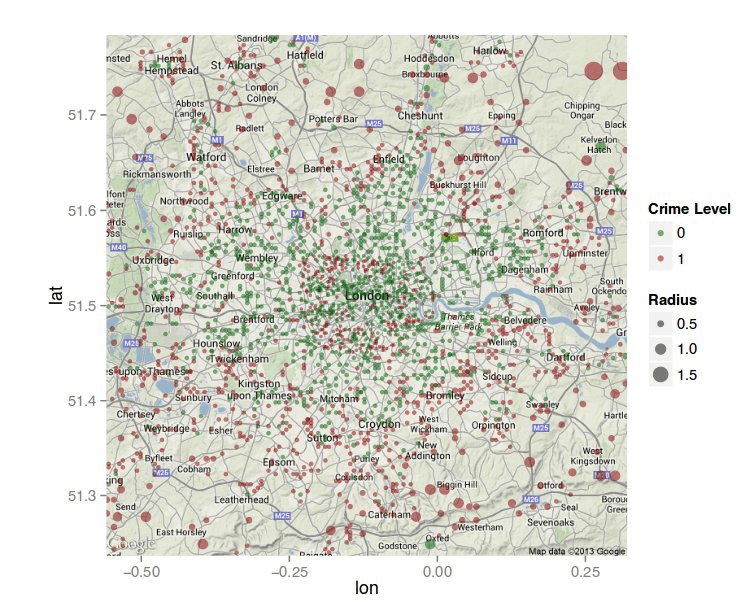Big data techniques are used to solve numerous problems: to cure rare diseases, catch poachers in India or find the best time to top trees in New York. Insurance agencies use big data to facilitate more accurate pricing; banks, industrial plants and retail chains — to improve production rates and increase sales; police and security specialists — to catch criminals. And in this post we are going to tell you about the last ones.
Criminalists are sure that crime has its own patterns, just like any other kind of human activity. While it’s rather hard to forecast individual behaviour, analytics can predict reaction of specific human groups with considerable accuracy.
While common users know nothing about great potential of big data, discuss the benefits of it or get afraid of Big Brother surveillance, analytics are studying this subject deeply to differentiate false signals from really dangerous ones, for example, to prevent financial crimes.
Big data gets a bad rap, but here's 10 projects that are truly great – http://t.co/uzz0TgOcJO pic.twitter.com/oqzy8RJsBH
— Kaspersky Lab (@kaspersky) April 7, 2015
Sometimes police uses big data to deal with already known information in a more efficient way, for instance to detect the most dangerous city arias. Take a look at this London map with ‘hot spots’ marked in red:
Similar security solutions are already used in police departments of Seattle, New York and Los-Angeles. The last one has already reported significant performance improvement that included 33% drop in burglaries, a 21% decrease in violent crime and a 12% reduction in property crime.
High technologies help police to take measures even before someone calls 911. Every bit of data is valuable: photos, updates and check-in statuses on Facebook and other social networks, truanting stats from local schools, medical findings, shopping data, records from public surveillance cameras, etc.
Besides, data analyses helps officials to determine various trends, e.g. the fact that criminals use guns and bullets as a sort of currency. Social networks where criminal themselves upload important data become an invaluable source of information, especially Facebook and Instagram.
Experts say that analytical systems can successfully cope with predicting street crimes, such as auto thefts and homicides. They are also good in forecasting street riots and acts of terrorism.
Forensic Logic helped police detect several criminals at large. Company experts combined data from the databases of some 80 towns within Los Angeles County and found out, that criminals went underground moving from one police precinct to the next one.
An expert team from Department of Criminology, University of Pennsylvania, developed an algorithm based on a variety of data, including reports from local police precincts. It is used to detect potential victims of a homicide. Police uses these data to warn people at risk.
Empower your law enforcement agency with #BigData #Analytics http://t.co/PiYTw6Bjwh pic.twitter.com/7USnkf5BSe
— IBM Analytics (@IBMAnalytics) April 11, 2015
Probably the most well known company that develops solutions for crime prediction is Palantir that has recently stepped out of the government services shade to the commercial market.
Palantir’s software can work with a real bunch of messy information: DNA data, audio and video recordings from different sources (including records from public surveillance cameras), register license plates to monitor car turnover and many other global options.
This solution was already used to prevent acts of terrorism in several countries. It was also used in Afghanistan to predict insurgent attacks. Besides, this software successfully located Mexican drug cartel members who murdered an American customs agent.
Palantir is currently raising a round that could total $400 million at a valuation of around $15 billion: http://t.co/dnehSntPk8
— Forbes (@Forbes) January 20, 2015
It solved a number of other cases, for example it tracked down hackers who installed spyware on Dalai Lama’s PC. A not so pompous but very important case: Palantir helped to catch a child molester in an hour after abuse. Software detected him on the video recordings taken by public surveillance cameras of the New York City.
How #BigData helps to catch #criminals
Tweet
Forbes writes, that Alex Carp, CEO of Palantir, esteems privacy. But now he has no choice but the company of a muscular body guard Mike who follows him everywhere. Mike protects Carp from extremists who already have sent him death threats and conspiracy theorists, schizophrenics and all other kinds of intrusive people. That’s the price of success, and a huge one: allegedly, Palantir also helped authorities to locate Osama bin Laden.
 analytics
analytics

